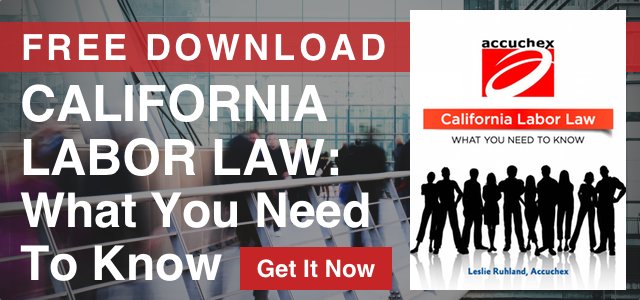In a recent case involving overtime labor law, the Supreme Court says the Labor Department must do a better job of explaining why it is changing a longstanding policy on whether certain workers deserve overtime pay.

The justices asked a lower court to take another look at whether federal law allows the agency to require overtime pay for people working as service advisers at auto dealerships.
The 6-2 ruling comes in a case involving a California auto dealer who says its service advisers are similar to car salesmen or mechanics, workers who are exempt from overtime requirements under the Fair Labor Standards Act (FLSA).
A federal district court had sided with the dealer in an earlier ruling, but the federal appeals court in San Francisco deferred to a new Labor Department rule stating that service advisers are not exempt from overtime.
New DOL Overtime Rule Challenged
The ruling came in a case involving Encino Motorcars, a California auto dealership arguing that its service advisers are in the same category as car salesmen or mechanics who are exempt from overtime requirements under the Fair Labor Standards Act (FLSA).
Justice Anthony Kennedy, writing for the court, said that while courts generally defer to a government agency’s reasonable interpretation of law, no deference is warranted if a regulation is “procedurally defective.”
The Labor Department in this case had changed existing policy with “barely any explanation,” Kennedy said.
He instructed lower courts to decide the question by looking only at the law itself, without deferring to the agency’s rule.
Justice Clarence Thomas, in his dissent, agreed that the Labor Department regulation is defective, but disagreed with the majority and "its ultimate decision to punt on the issue before it.”
Justice Thomas said he would have reversed the appeals court and ruled for the auto dealer. His dissent was joined by Justice Samuel Alito.
Who Will Really Benefit From the New Overtime Rules?
The actual, overall benefits to workers are small. The DOL's own data shows that only one in five of 4.2 million newly covered workers can expect overtime pay under the rule. In addition, the remaining eligible employees are likely to be moved into hourly jobs.
In addition, the Labor Department has predicted that workers who do get overtime pay will see base wages reduced by an average of 5.3 percent, and the net pay gains for these workers will be less than $20 per week.
Not only will the benefits will be nominal, the regulatory and compliance elements of the new rule will add increased administrative costs.
According to Douglas Holtz-Eakin, president of the American Action Forum and a former director of the Congressional Budget Office, employers can expect to see more than 2.5 million paperwork-burden hours and nearly $2 billion in compliance costs in the first year alone. This is an alarming burden, especially for smaller businesses whose rate of birth has fallen below the exit rate of firms for the first time.
A Look at the Numbers for Overtime Changes
The White House released an analysis of who will benefit most from the overtime expansion.
Larger proportions of southern work forces will become eligible for overtime than in other regions. The state with the largest percentage of workers affected by the new rule is Oklahoma, where the Obama administration estimates that 4.4% of workers will soon be eligible for overtime.

Nearly one-quarter of workers who will benefit from the new rules after December 1, 2016 are from the big three states of California, Texas, and Florida.
In addition, a larger proportion of workers with at least a bachelor's degree are affected than less educated workers. Women are more likely than men to be affected by the new rule.

(Images courtesy of Business Insider)
The Challenge for Businesses With Low-Threshold Exempt Workers
Employers will need to educate themselves or avail themselves of the professional assistance and resources that are currently available to them.
Before the Final Rule goes into effect on December 1st, employers should assess which employees will be affected, and how the employer will want to respond. One approach would be to raise the salaries and compensation of these employees to meet the new salary/compensation thresholds.
This course of action may impose not only direct costs, but also indirect costs by creating pressure to raise salaries for other employees higher up on the organizational chart, or causing disgruntlement for those employees if the salary differential is reduced.
Another approach would be to re-classify exempt employees as non-exempt and pay them overtime in accordance with the FLSA. To control costs associated with this approach, employers may be tempted to limit hours of non-exempt employees to 40 per week, or even consider reducing hourly rates to offset their expected future overtime earnings.
Getting Expert Help to Stay Up to Date and In Compliance
An updated payroll compliance strategy will help your organization meet its obligations, while providing accuracy and timeliness. So take time to understand the laws, prioritize employee and manager salary changes, and maintain accurate record keeping. In this way, you will make compliance a sure thing.
Another key step in maintaining HR compliance and increasing your company's cost-effectiveness is to consider outsourcing. A professional payroll management and workforce solutions provider such as Accuchex can offer much-needed help with Human Resources needs and questions.
Accuchex is a full spectrum Payroll Management Services provider offering expertise in Time Management, Insurance and Retirement issues, as well.


